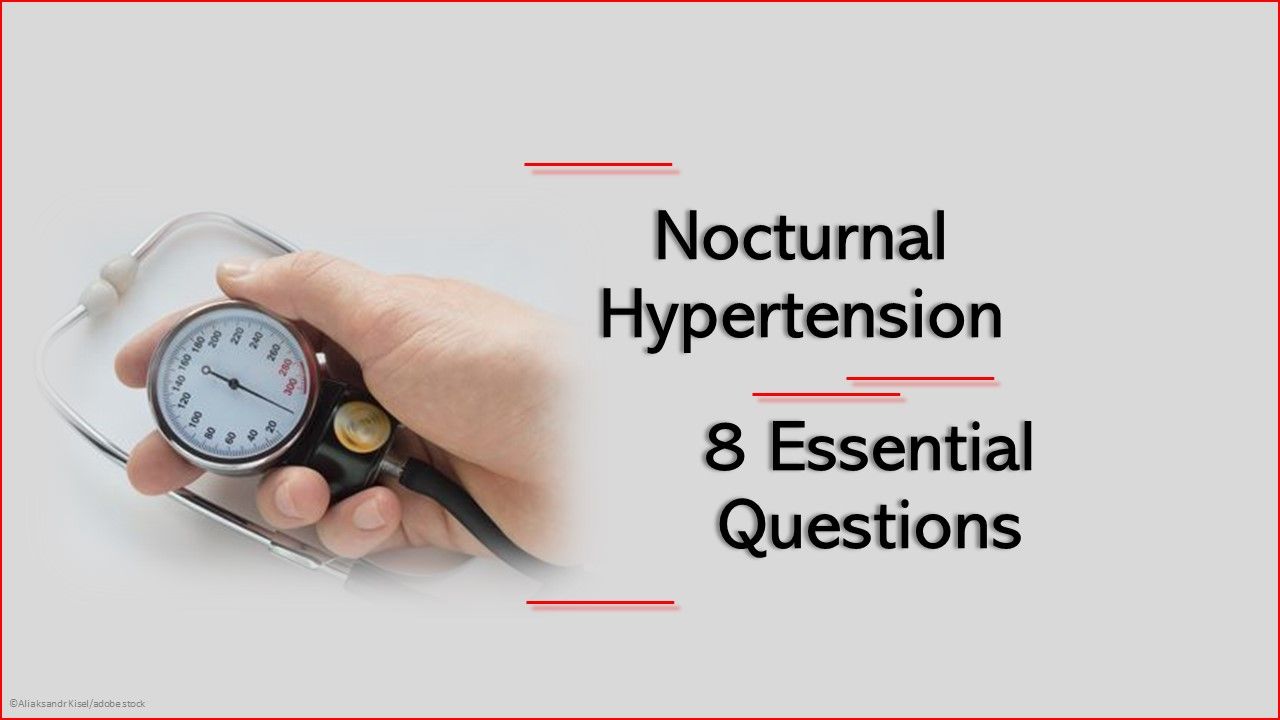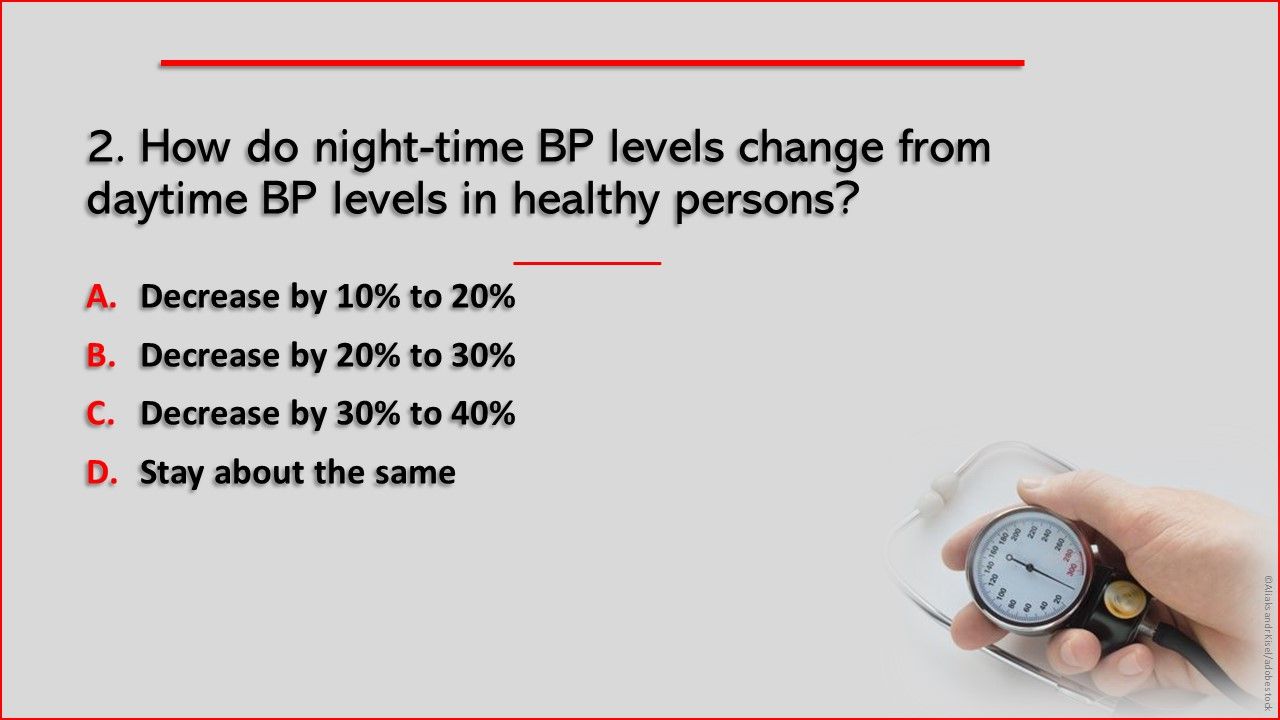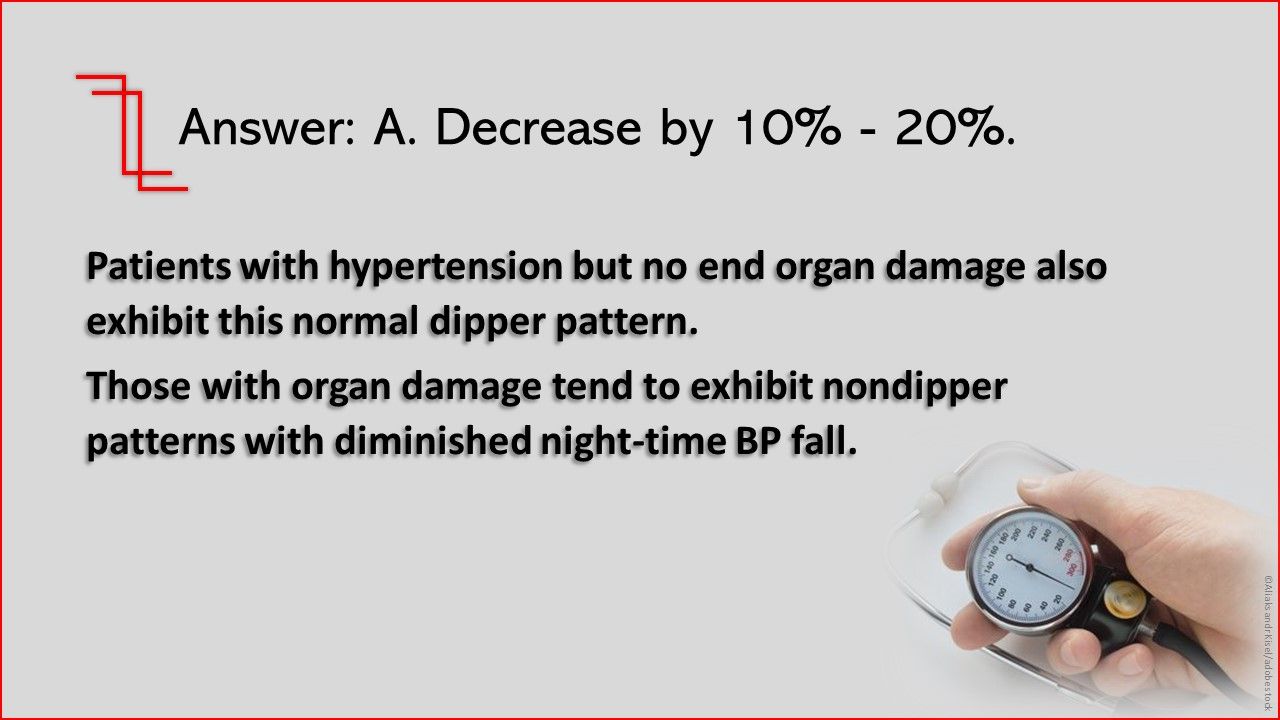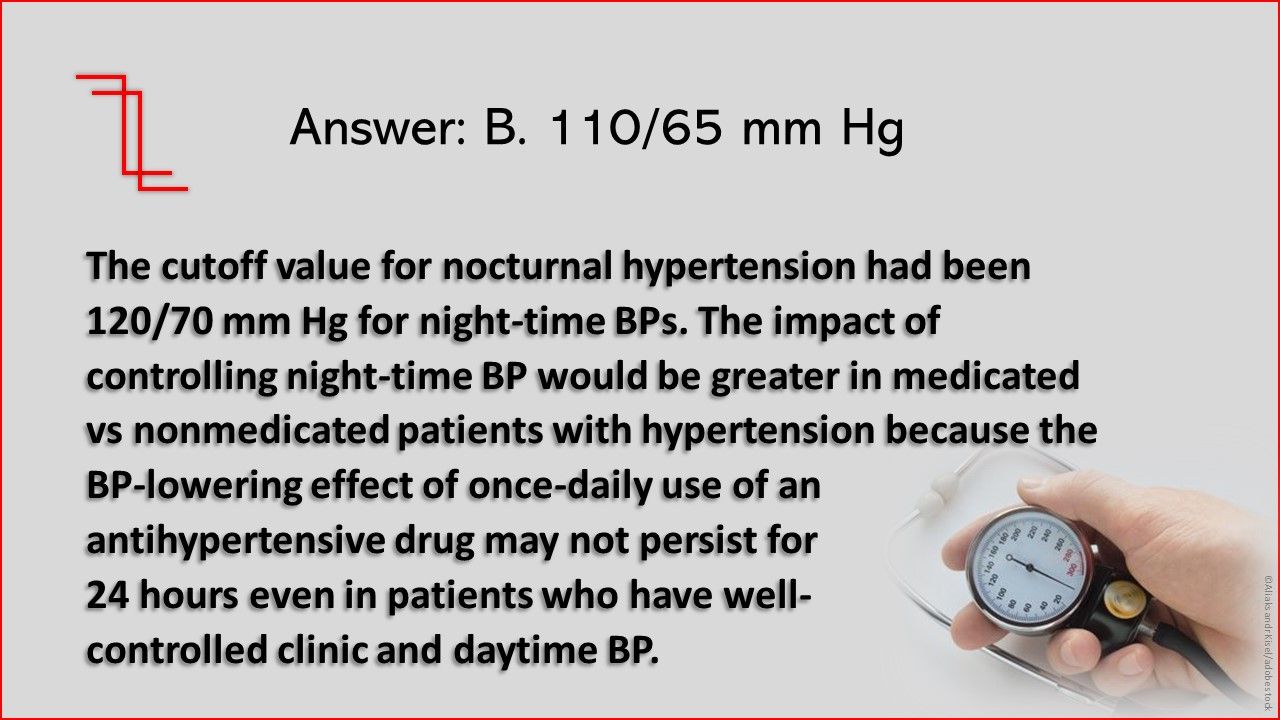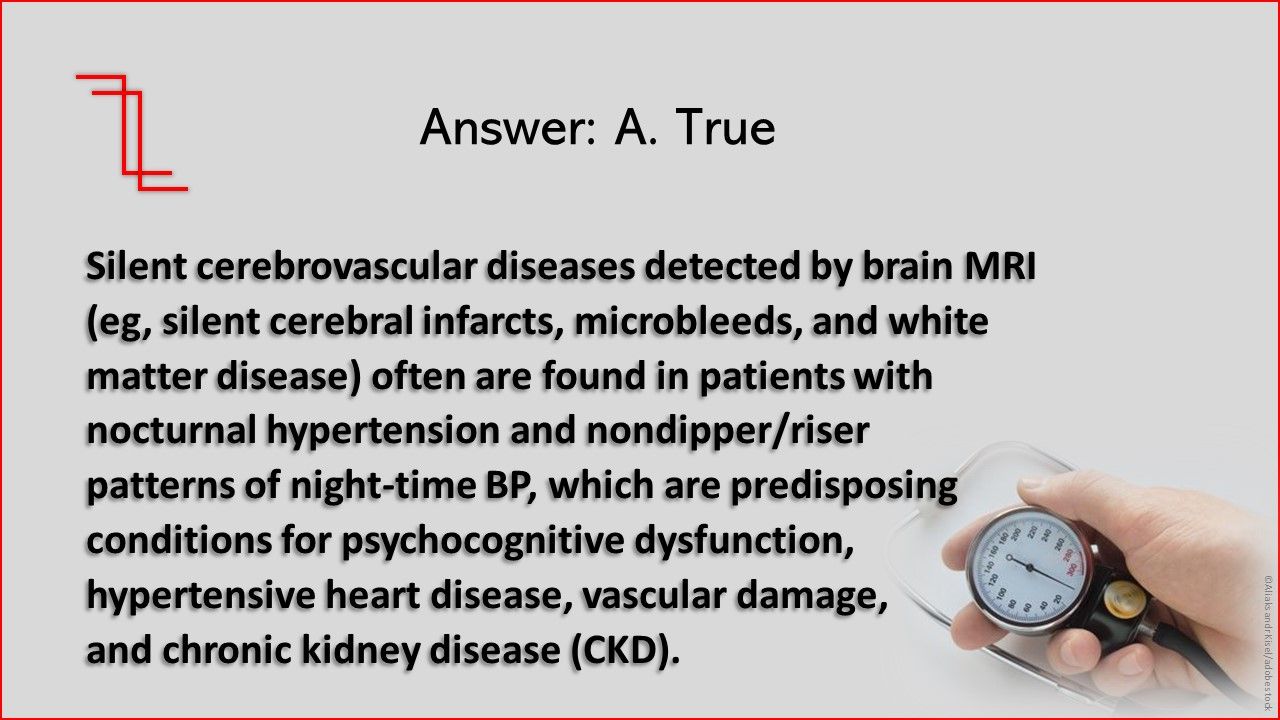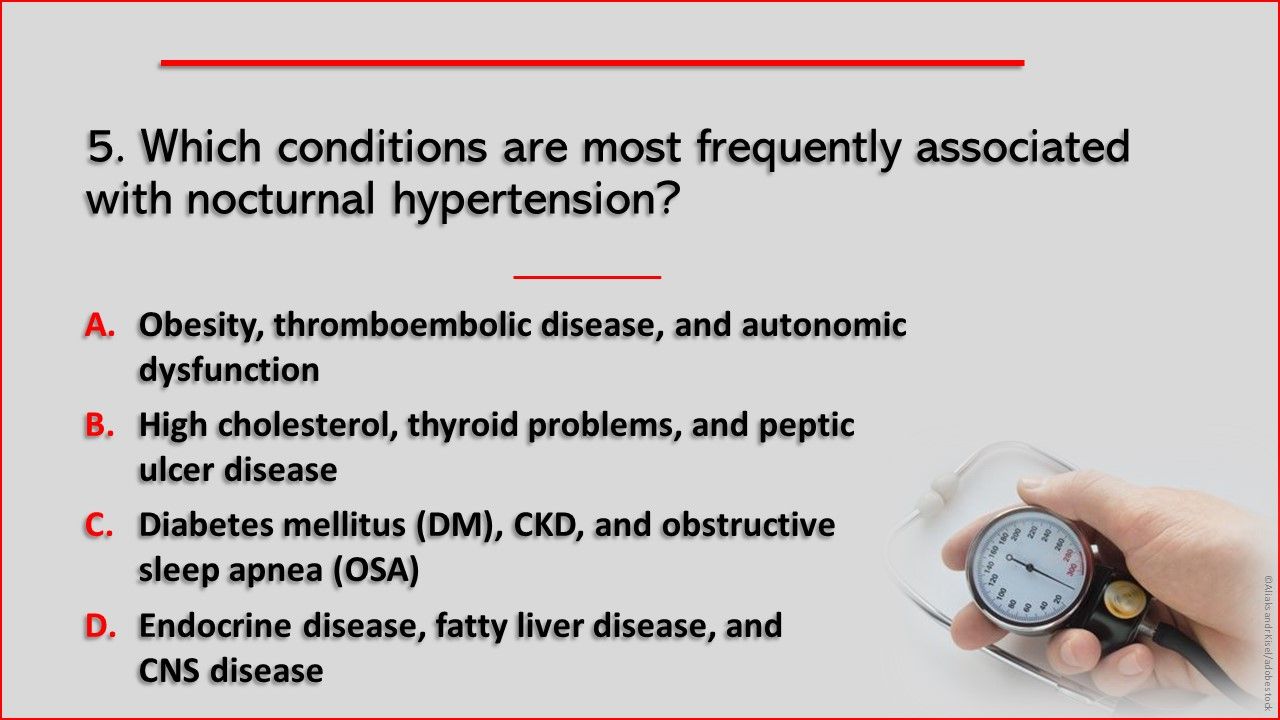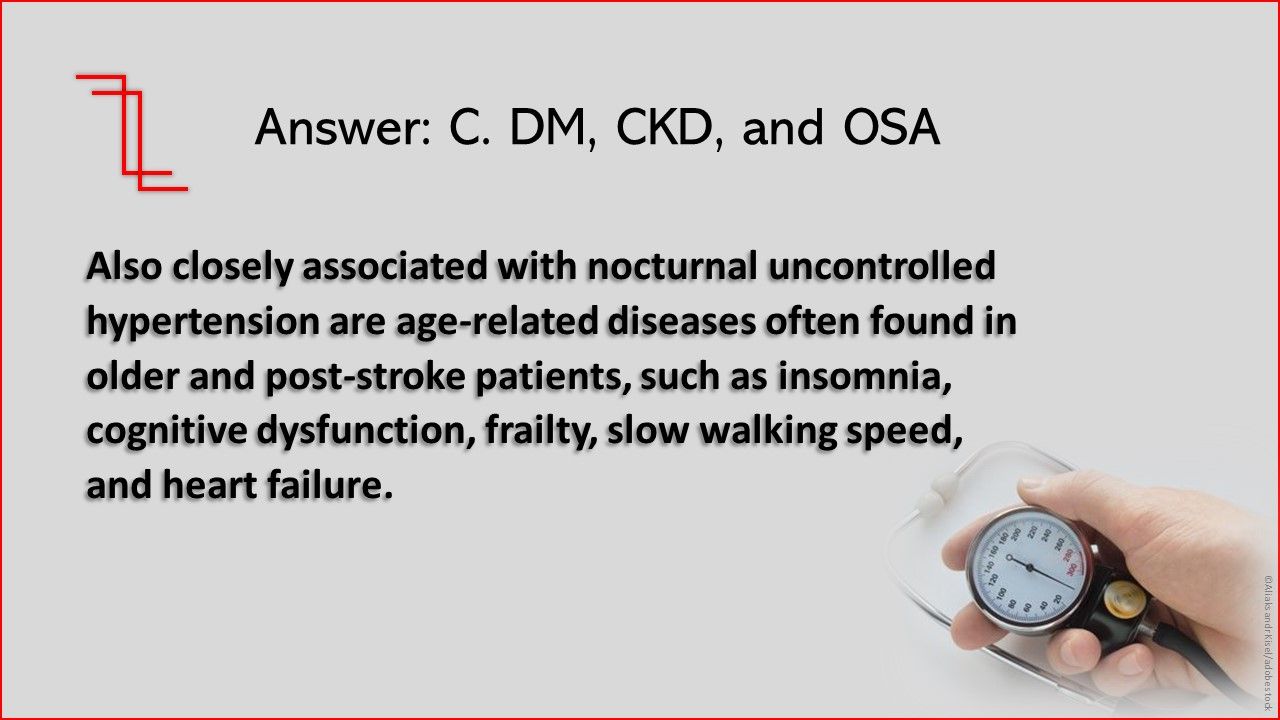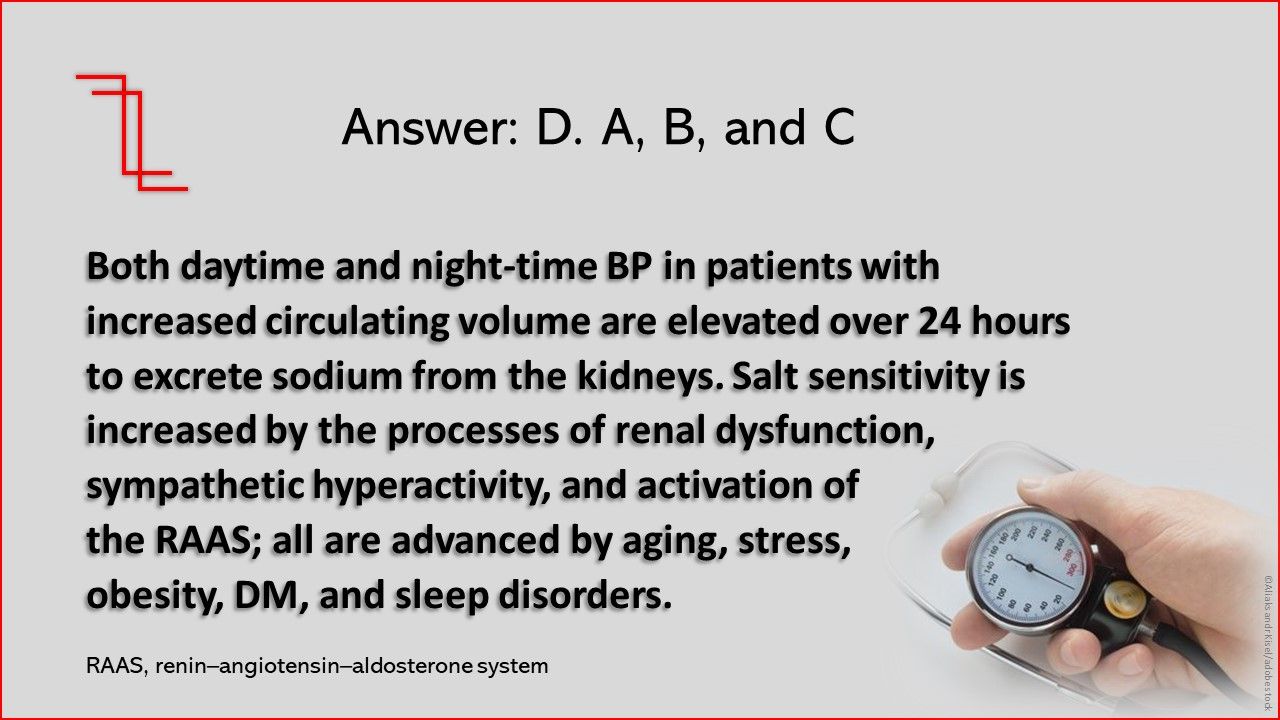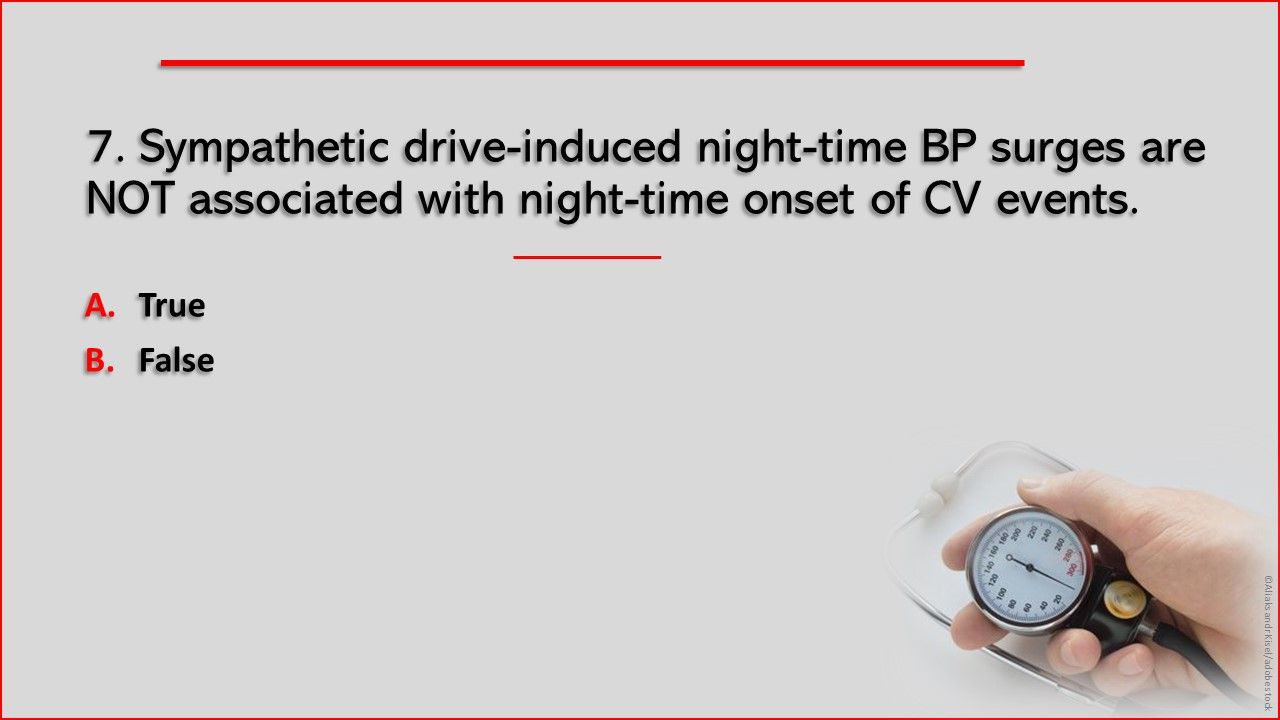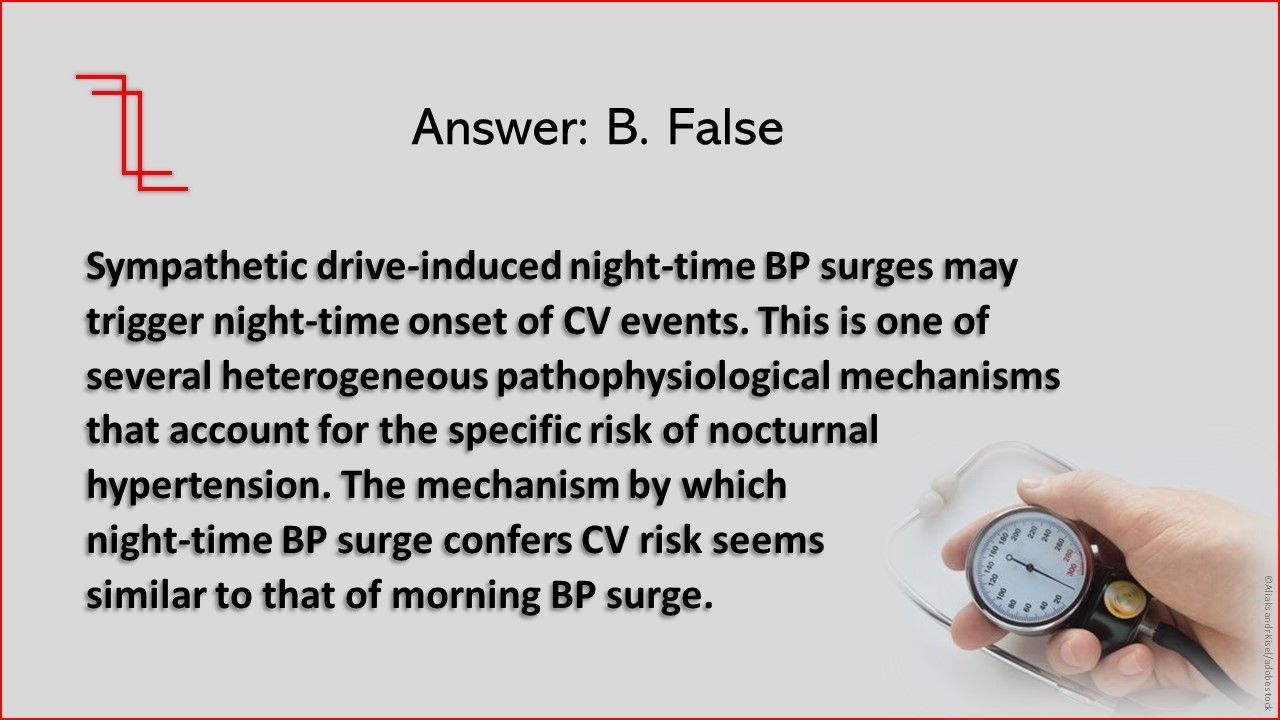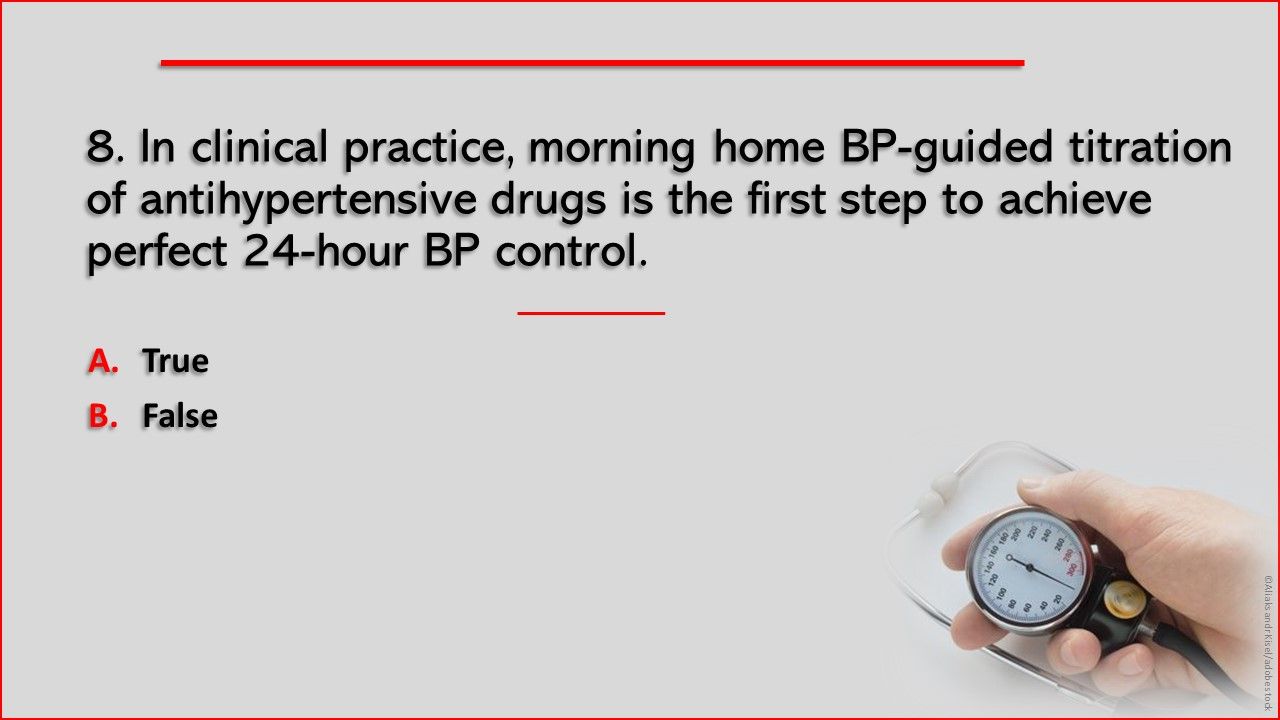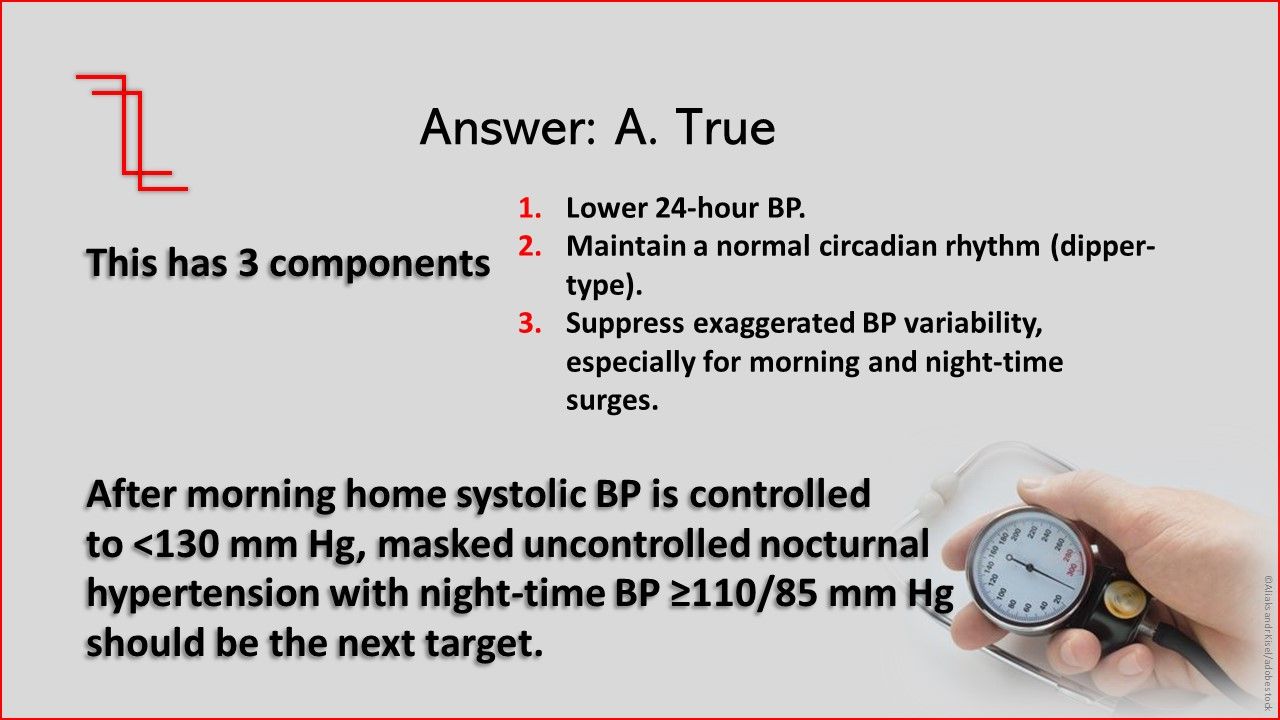1. According to the 2017 ACC/AHA guidelines, all BPs measured during the awake period and daytime ambulatory BPs should be controlled to what level?
Answer: C. All BPs measured during the awake period and daytime ambulatory BPs should be controlled to A.<130/80 mm Hg.
2. How do night-time BP levels change from daytime BP levels in healthy persons?
Answer: D. Night-time BP levels decrease from daytime BP levels by 10% - 20% in healthy persons.
3. To what level did the 2017 AHA/ACC guidelines lowered the cutoff value of nocturnal hypertension?
Answer: B. The 2017 AHA/ACC guidelines lowered the cutoff value of nocturnal hypertension to 110/56 mm Hg from 120/70 mm Hg.
4. True or False: Nocturnal hypertension is associated with subclinical organ damages.
Answer: A. True. Silent cerebrovascular diseases often are found in patients with nocturnal hypertension.
5. Which conditions are most frequently associated with nocturnal hypertension?
Answer: C. DM, CKD, and OSA are frequently associated with nocturnal hypertension.
6. What are the main causes of nocturnal hypertension?
Answer: D. A. Advanced structural vascular disease, B. Increase in sodium sensitivity, and C. High-sodium diet are the primary causes of nocturnal hypertension.
7. True or False: Sympathetic drive-induced night-time BP surges are NOT associated with night-time onset of CV events.
Answer: B. False. Sympathetic drive-induced night-time BP surges may trigger night-time onset of CV events and is one of several heterogeneous pathophysiological mechanisms that account for the specific risk of nocturnal hypertension.
8. True or False: In clinical practice, morning home BP-guided titration of antihypertensive drugs is the first step to achieve perfect 24-hour BP control.
Answer: A. True. Morning home BP-guided titration of antihypertensive drugs is the first step to achieve 24-hour BP control.
Reference: Kario K. Nocturnal hypertension: new technology and evidence. Hypertension. 2018;71:997–1009. doi:10.1161/HYPERTENSIONAHA.118.10971

